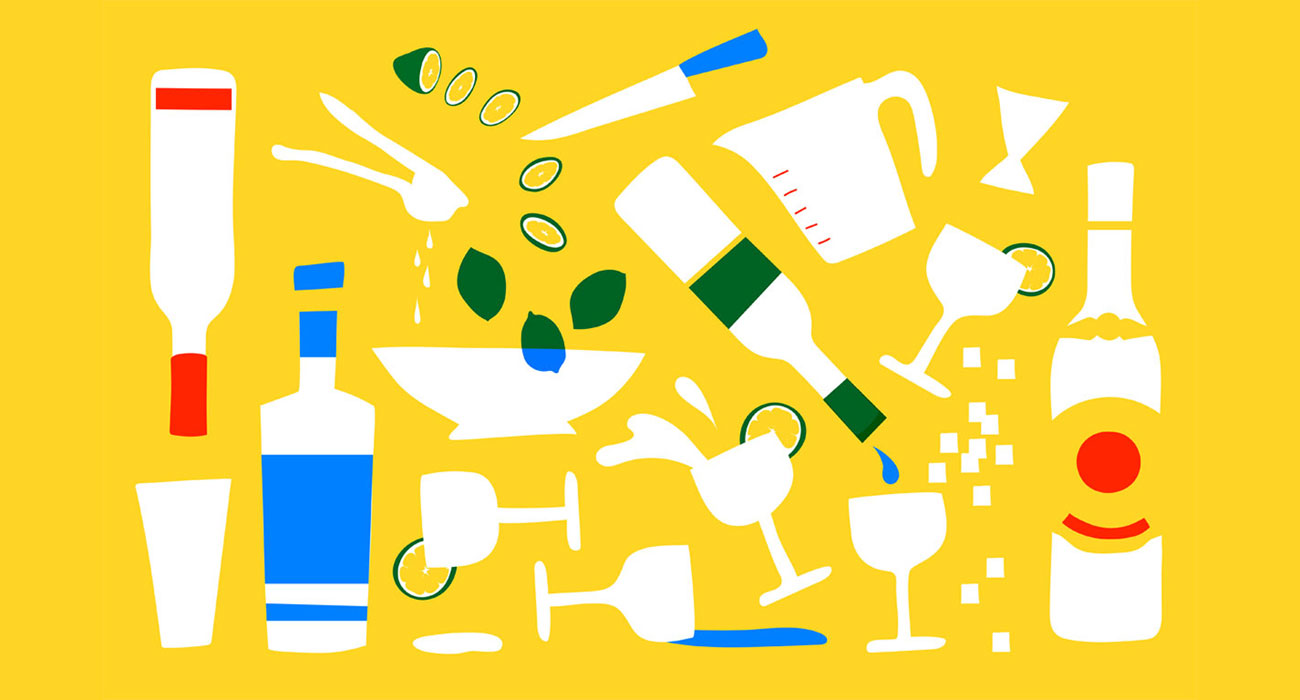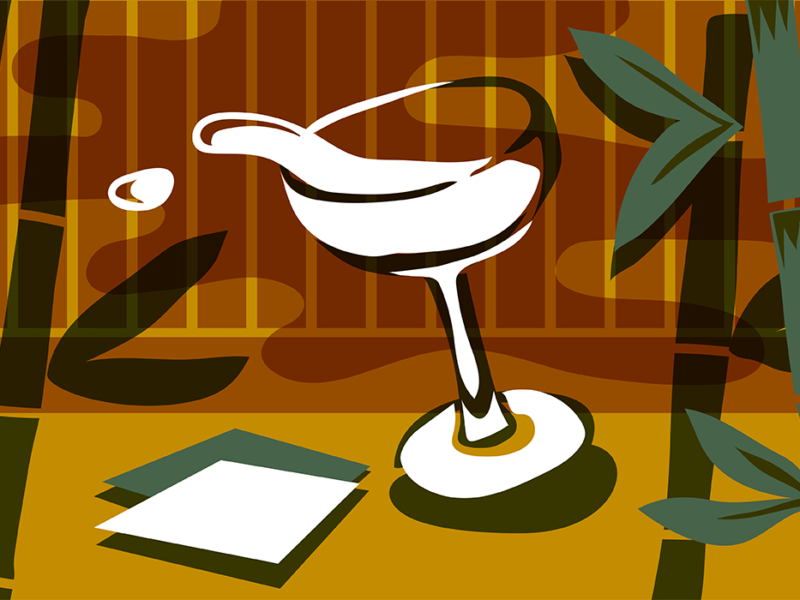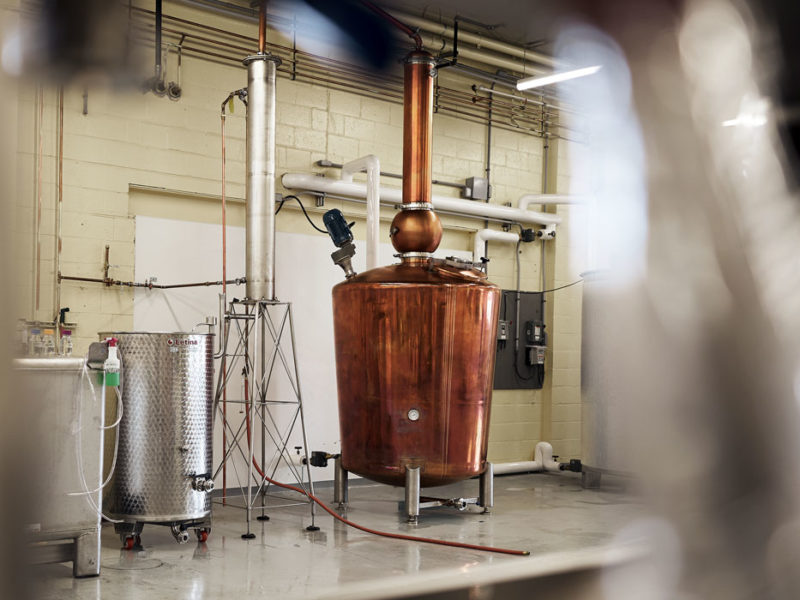On May 14, 2018, the Rum Reader convened a crucial cocktail council. A select panel of New York-based bartenders and drinks historians gathered at famed cathedral to the cocktail, Death & Company, for a rare chance to freely discuss that foundational rum drink, the Daiquiri.
While the Daiquiri is considered a classic drink, its ubiquity in cocktail bars today comes with no ironclad, agreed-upon specification. Every bartender places onto it a unique stamp, or tries to. We saw an opportunity to investigate the thinking behind these individual approaches, as a way to better understand both the drink’s history and how it is appreciated today.
Troy Sidle is a man driven by all things Daiquiri. Training under Toby Maloney at Chicago’s Violet Hour some years ago, he learned of its centrality to the bartender’s art. The Rum Reader invited him to assemble a dream team of Daiquiri experts to explore its particular role in the current cocktail revival. Our panel consisted of:
Krista Archer, the New York brand manager for Spiribam, the prominent producer of rhum agricole and other Caribbean elixirs.
Matthew Belanger, the head bartender at Death & Company, who also served stints at Donna and Pouring Ribbons.
Alicia Blegen, the general manager of the acclaimed restaurant Lilia and, in a former life, a Daiquiri-slinger at Owney’s Rum’s in-house bar.
Kate Perry, La Maison & Velier’s United States market manager and former general manager of Seattle’s Rumba, often considered the finest rum bar in the country.
Joaquín Simó, bartender and owner at Pouring Ribbons, formerly also of Death & Company, and one of the most knowledgeable and respected bartenders of his generation.
Karl Franz Williams, a serial bar entrepreneur whose projects include Solomon & Kuff’s Rum Hall, known for its rum-forward, pan-Caribbean menu.
David Wondrich, the world’s foremost authority on booze and its history.
Troy served as moderator of the discussion. The panel was ably hosted by the Death & Company team of Shannon Tebay and Sam Johnson, who shook up a few Daiquiris to keep us going.
Not every dream team candidate was available to be drafted for this particular get-together, and we hope to include more in subsequent panels, including in locations other than New York. (We have already shared the compelling thoughts of pioneer Audrey Saunders in an earlier piece.)
The discussion is presented in two parts, of which this is the first. Read Part 2 here.
A tremendous thank you to all of our participants. Now, on to the first of what we expect will be many Daiquiri discussions.
This transcript has been edited for length and clarity. — Ed.
Can Anyone Invent Rum, Lime, and Sugar?
Troy: I am certainly not going to look for consensus among us about the ideal way to make a Daiquiri as much as I am asking for a lively debate about the Daiquiri. What was it originally, what is it now, and where’s it going? So the first question is simply, “What is a Daiquiri?”
Karl: The simple answer is a cocktail served up, made from lime, sugar, and rum. I guess you know the history, that it came from Cuba. There is some debate about whether it was Jennings Cox or someone else who created it. but it was similar to the navy grog that was already a ration on British ships. So, this idea of lime, sugar, and rum; it was already in vogue.
David: There’s a lot of truth to the Cox story, actually, as far as we can tell. As far as cocktail creation stories, I think it’s one of the best documented. But there are some angles to it that haven’t been really brought out. It wasn’t Cox himself. This comes from piecing together all kinds of stuff. There was a long letter written to the New York Sun in the 1930s by an engineer who worked at the iron mines there at Daiquiri, named Robert Huntington Lyman Jr.
There were seven American guys there running the mine in 1897, and the Cuban War of Independence was going on, kind of low grade, around it. They were pretty isolated up there, but every once in a while, the supply ship would come and give them a block of ice and a couple bottles of Scotch. They’d drink the Scotch and keep the ice as long as they could. Finally, they started using local supplies, which was Bacardí rum, and all seven of them came up with this collectively: “Let’s put in some sugar and lime in it,” which was obviously the oldest thing in the world. But I think they did use a cocktail shaker. They shook it up, but then they possibly put it into a tall glass. I think they probably made it a bunch of different ways because there were seven of them and they were bored.
Krista: They were thirsty.
David: A lot of people came up there, saw them making this drink, and took it away. The Americans the next year, in 1898, started hanging out at the Anglo-American Club in Santiago and they taught the bartender there to make their Daiquiri drink. From there, it goes to Havana and Emilio “Maragato” Gonzalez, who’s one of the more veteran American-style bartenders in Havana. He plays around with the drink and kind of perfects it. It goes around all the bars in Havana and everybody plays around with it until they reached kind of a consensus of how to make it. At that point, it starts to filter up into New York and D.C. Many of these stages are well-documented, which you don’t really get from most other drinks. It’s kind of cool.
Troy: When I was talking with him about the Sidecar, Greg Boehm said, “You have to remember, every drink has two histories: there’s the history of the name, then there’s the history of the recipe.” Rum and lime and sugar have many different contexts and many different ways that they’ve come together.
David: In the Daiquiri, it wasn’t just rum, lime, and sugar. It was light Cuban rum, which was pot-stilled at the time. Bacardí didn’t go to column still until much later, no matter what they tell you, and it might have been a blend of pot and column, since they had a column by around 1910. But originally it was this light, but not super light, rum, that’s in the cocktail shaker, served as a cocktail. And that’s really the difference. It’s not made as punch, it’s not made like a Rickey, it’s a specific thing and it’s served as a cocktail at a point where cocktails were mostly bitters and spirits or wine. People said, “That’s not really a cocktail. It’s a sour. It’s a different thing. It’s not an aperitif.” I think that’s what made the Daiquiri break in, that it was being served as a cocktail.
Troy: And ice.
David: Oh, yeah. Ice, of course. But they had ice. You know, the Knickerbocker is a drink from Boston in the 1850s which had rum and sugar and ice, so that’s pretty old.
Troy: And the Daiquiri Seven—where were they from?
David: They were Canadians and Americans. Lyman was Canadian. “Los Siete Solteros,” the Seven Bachelors, they were called, because they were just up there on a mountain, at this iron mine. East Cuba’s pretty funky where they were; there wasn’t anything around. Daiquiri, the nearest town, was just three houses and a pier. They couldn’t go out because of the revolutionaries. They had to be barricaded in there. So, I think they probably drank a lot of these.
Daiquiri by David Wondrich

Using a pre-Prohibition silver-plated barspoon and a pre-Prohibition two-part silver-plated cocktail shaker of heavy construction, stir one spoon of granulated white sugar into the juice of half a lime.
Add two ounces of 1910-vintage Bacardí Carta Blanca rum, from a bottle in good condition with a high fill level. Should that prove to be unavailable, two ounces of Havana Club 3-year-old rum will make an adequate substitute.
Fill shaker three quarters of the way with ice fresh from the freezer.
Shake until the shaker becomes too cold to hold.
Strain (with, of course, a pre-Prohibition silver-plated strainer) into a chilled, thin-walled cocktail coupe.
The setting is less important than the company, which is essential. My wife, Karen, should be there. For every additional good friend who is present, the above strictures can be relaxed. If any three of these people are present, the drink will even be acceptable if mixed in two red Solo cups using Bacardí and simple syrup: (listed alphabetically) Jeff Berry, Greg Best, Toby Cecchini, Jason Crawley, Dale DeGroff, Doug Frost, John Gertsen, Gary Regan, Julie Reiner, Audrey Saunders.
Troy: Joaquín, you have Cuban family. You’ve been to Cuba in the last few years. How does the Daiquiri connect to Cuba from your perspective?
Joaquín: Well, as it’s been pointed out, rum, lime, and sugar have been consumed together in some way, shape, or form since rum was created. Typically, wherever rum was created, there was citrus hanging around and they already had the sugar, because that’s how they make rum. So, without a doubt, this is not native to Cuba. Indeed, the earlier Cuban prototype for the Daiquiri, the Canchánchara, has the same ingredients, though the serve is a little different and, obviously, the style of rum and probably sugar would have been different. But that combination did not come about with some American mining engineer. He may have been the one who gave it the name that stuck, but that recipe has been all over the Caribbean. For any one island to claim that they own rum, lime, and sugar is laughable at best.
Troy: What about rum, lime, sugar, and ice?
Joaquín: I think when you shake it and you serve it up as a cocktail, or you frappé it with ice, then it becomes more clearly identifiable as a Daiquiri. Cuba’s been home to a lot of classic cocktails. It’s not just the Daiquiri that they can lay claim to, but it’s the Daiquiri that helped put them on the map. And specifically, the Daiquiris made at La Florida. It’s called “the cradle of the Daiquiri” for a reason, and they put out more Daiquiris than anyone else in the world. I think there’s that sense of ownership and pride that comes with it. Anything that comes from your country, that has taken the world by storm, you feel really proud about that.
Troy: How proletarian is the Daiquiri?
Joaquin: Pretty proletarian. I mean, there’s nothing sophisticated when you really think about the ingredients. If you’ve ever had personal interactions with sugarcane, this is not a sophisticated plant. It’s a giant grass. You hack at it with a machete. You run it through a mill. Maybe you’re distilling the juice after a brief boiling. Maybe you’re using what’s effectively industrial waste. Depending on how you’re doing it but then and then the other materials.
Karl: Industrial waste tastes so good in there, though.
Joaquin: Diamonds are from coal, right?
How Should a Daiquiri Taste?
Troy: Alicia, do you think a Daiquiri requires white rum? In your spec, I love how you referred to the rum in your Daiquiri as a generic workhorse white rum.
Alicia: I find that for a lot of people, it’s a great gateway drink for getting people turned on to other rums, and it makes them a little bit more accessible. I also like the idea of something being fairly straightforward, that doesn’t feel like it’s super esoteric or hard to explain. In part because a lot of the guests that we see at my restaurant are not somebody who would be looking for a ten-rum list, for example. And I am from Wisconsin. So, I like the workhorse type thing.
Daiquiri by Alicia Blegen
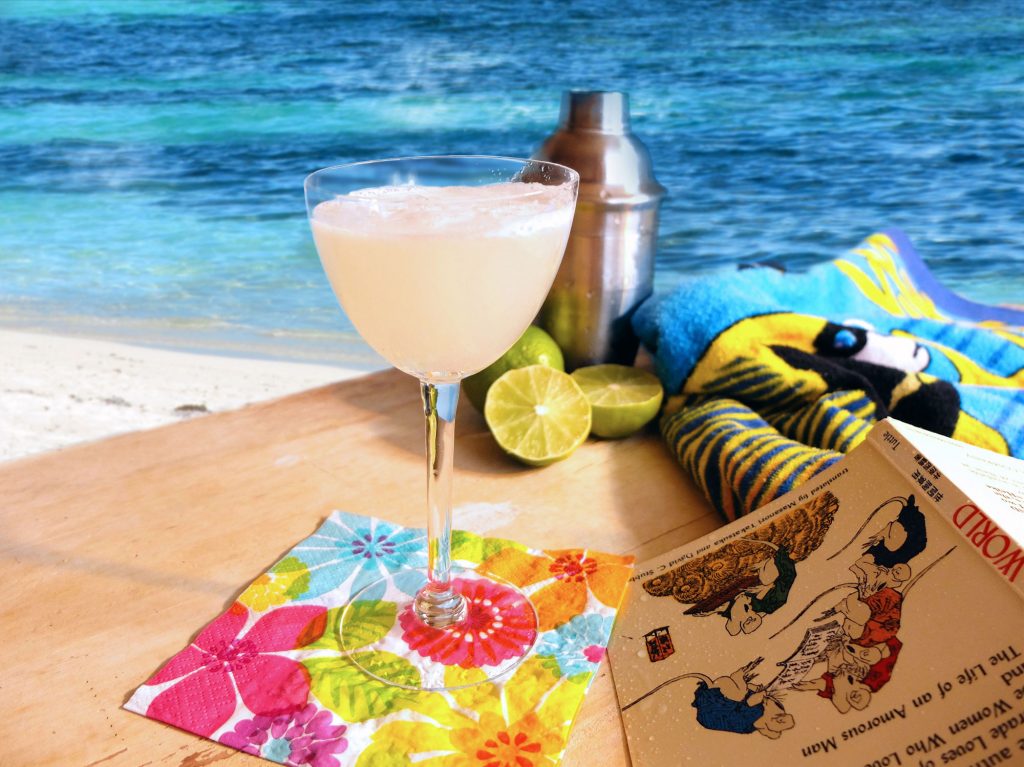
Daiquiris are the cacio e pepe of cocktails—you get to see the quality of craftsmanship and ingredients immediately.
My ideal Daiquiri involves 2 ounces of workhorse white rum (site-specific, the local favorite of wherever I might be), 3/4 ounce lime, 1/2 ounce cane syrup, shaken with grapefruit peel. It is served up, in a Nick and Nora or a rocks glass. I am definitely pantsless on a beach in a rum-making country, it is somewhere around 4 p.m. There is a book in one hand, a Daiquiri in the other. My toes are sandy.
Troy: Okay, what would you say is the ideal rum for that?
David: Bacardí from 1911. Failing that, these days, I like Havana Club 3, which is a descendant of that and maybe a little lighter, but still has some flavor.
Kate: I like rum with flavor. I like pot-still rum, I like pot-still blended rum. I think that the Daiquiri should have rum as the focus with the other ingredients giving it a hug. I like to taste the rum in the drinks, so using modern Cuban style or more modern Puerto Rican multi-column rum doesn’t really do it for me. I want some rum with a little bit of funk, a little bit of crispness, a little bit of body. I want clean and delicious but I want something behind it.
Troy: If it’s really all about that spirit, why prefer a Daiquiri to a rum Old Fashioned, for example?
Kate: Because I want the sugar and the citrus. I want the brightness from the lime. I want the roundness from the sugar. It should be a balanced drink, but any Daiquiri that you make, you have to balance the proportions of your lime and sugar to the rum. If you add a 40 percent column-still rum with an ounce of lime and three quarters of an ounce of simple syrup, you lose the rum. If you make that same proportion with two ounces of 50 percent agricole, it’s unbalanced as well. So, you have to balance your proportions depending on the type of still that your rum was distilled in. The original Daiquiri was most likely a pot still; heavy, funky, more aguardiente style, so that’s not really similar to what Bacardí touts today as the original Daiquiri. Those rums are completely different. There’s no translation there.
David: Most limes fall in a pretty narrow range. The Persian limes you get in the supermarket mostly hold an ounce of juice, give or take. Half of that is pretty standard, but if you make a lot of drinks, you notice when you’re getting more or you’re getting less.
Key limes seem to be what they were using then, and they would use a whole lime and squeeze it with their fingers.
Kate: They’re tiny.
David: A whole one holds maybe half an ounce of juice, and that’s a good, juicy one.
Kate: I’ve been working around New York for six months now, drinking Daiquiris, and I’m like, “What is going on? Why is there so much lime and sugar in this glass?” If it’s something with some pot still or some ABV, I always do two ounce, three quarter, half rich simple, because I like the body of the rich.
David: I’ve gone to half an ounce of lime juice. I won’t put any more than that. Two ounce of rum and half an ounce of lime juice and I’ll stir the sugar into the lime. I won’t use syrup. I never use syrup.
Troy: And what proof of rum are you looking at there?
David: That’s anywhere between 40 and 45 percent. In a Daiquiri, I’m not thrilled with a crazy high-proof one. I will use like occasionally an agricole. I mean, you know, there’s like The Daiquiri and then there’s the Daiquiri as just a rum drink or you can test out all the rums you want with it, and it’s fun that many different rums work deliciously.
Daiquiri by Kate Perry

The best Daiquiri ever is a celebration of the best raw material. If you use the best rum possible, the best lime possible, and the best sugar possible, you can make the best Daiquiri possible. I like my rum flavorful and funky—Clairin from Haiti (I’m biased, but genuinely so), Neisson from Martinique, or Rum Fire from Hampden Estate, Jamaica. The best limes I’ve ever tasted were citrons verts from Haiti—tiny and so full of flavor, nothing like commercial limes we find here. The best sugar I’ve ever had is Rapadu, also from Haiti (where everything tastes better) and still made in the old traditional way from heirloom varietals of cane. There’s so much flavor in it—spice and anise notes—and completely different than white table sugar, which is just “sweet.”
For me, the best Daiquiri ever would be:
2 ounces Clairin Sajous
3/4 ounce fresh lime juice (with citron vert)
1/2 ounce Rapadu syrup
Shaken and strained into a Nick and Nora if you’re fancy, or anything that holds liquid if you’re not. Preferably with sand between my toes.
The Bartender’s Handshake
Krista: I was a bartender for years, but never a cocktail bartender, more like the beer and shot kind. So, when I did start coming to the craft cocktail side of things, I learned through going to bars myself and saying, “Hey, can I get a Daiquiri?” Just seeing what other people were giving me, what their default was. I realized that I liked things that were a little more tart and a little—actually, to be fair, more balanced. When I first started as an ambassador, it was completely different, and when I finally found one that I liked, I asked, “What were your specs?” And that’s where my specs came from, never having been on the cocktail side. I like boozy cocktails, so the two ounces and then three quarters, three quarters and that, to me, tastes balanced, but I think it’s really interesting how Daiquiris are so personal.
Joaquín: Just goes back to the idea of the Daiquiri as an omelet for bartenders. You walk into a fine dining kitchen and you can make a little butter, egg, salt, and pepper taste magnificent, perfect texture. You know how to cook. If you walk into a bar and you order a Daiquiri and they give you rum, lime, and sugar but to perfection, they know how to bartend, right? If your version is a fines herbs Daiquiri with Chartreuse, you just added a little handful of herbs in there to kick that up, but it’s still cookin’. If you still know how to make that omelet, it’s still gonna be delicious.
Troy: So, French omelet and Italian—what was the dish that you said?
Alicia: Cacio e pepe? Yeah. That’s one of the reasons why I love ordering them. It gives you a chance to see, like, how somebody is excelling or not excelling at the craft, whether or not they respect the craft.
David: There’s also some latitude and drinkability with it. If they fuck it up but not too bad, it’s still pretty tasty.
Alicia: Yeah, I just might not order a second one.
David: Exactly, exactly.
Troy: At what point did we start doing that, as kind of a litmus test for other bartenders?
David: About ten years ago, I think.
Joaquín: It’s about right. When there were more than five bars that could make them in the city. When there were enough new ones where you had to test them.
Troy: When there were enough bars that you were starting to test the bar, not just the bartender.
Daiquiri Expectations
Kate: I came into the Daiquiri kind of late, but really hard. In 2012, I opened a bar in Seattle called Rumba. It has 600 rums. We decided that the Daiquiri was the cornerstone of our cocktail menu because if you open a rum bar in the U.S., you’re automatically a tiki bar and we were not that at all, and did not want to play in that arena at all. So, we decided hardcore, the Daiquiri is the centerpiece of our menu. In that time in Seattle, it was like middle-of-America rum selections, like you’re lucky if you could find anything that wasn’t—
Joaquín: The Goslings and Captain Morgan? That’s crazy.
Kate: So exciting. So, we opened up this extravagant rum bar that focused on the Daiquiri and everybody was like, “The Daiquiri?”
Alicia: The frozen strawberry?
Kate: Yeah, they’re a sugary, strawberry frozen thing. We started serving Daiquiris up in coupes and we had, you know, the number 1, number 2, number 3, number 4 with Cuban specs on the menu and we said, “This is the Daiquiri. This is what we do.” To everybody who came in to the bar said, “What should I try? I don’t really like rum,” I said, “Have a Daiquiri.” “No, I don’t want that.” “Well, I’m going to make you a Daiquiri. If you hate it, we’ll talk.” “This is delicious. What is this thing?” “This is a Daiquiri.” So, that’s been my life for the last six years.
Matthew: There’s so much that we discard. Like the whole era of calling anything that was a cocktail a Martini. We universally scoff at stuff like that. But the one thing that has survived that and is still sort of admissible is a Strawberry Daiquiri or a Pineapple Daiquiri. If you came in here and asked for that, the bartender would make it for you and be kind of excited that you ask for it. The Daiquiri acts as a vehicle that you can bolt all of this other stuff on to and it’s still accommodated.
Troy: Don’t you feel like we, as an industry, for a while there were making drinks for the history books rather than for guests?
Matthew: Oh, yeah. I think, historically, these movements go through cycles where you’re more concerned about what’s in the glass and than your guest’s experience of it. I think we have maybe grown past the nerdy fixation on this. Obviously your responsibility at the end of the day is to your guest. You have to walk the fine line between these two considerations, because you obviously have reverence for the art form, the craft, but you also have an obligation to your guest.
If I’m talking to a guest about what they like and what they like is not a Daiquiri, I wouldn’t ruin a Daiquiri to give them something that was to their palate. I would suggest that they drink something else. And I think that’s how you sort of accomplish both of these things.
It’s like understanding the classics enough to know how far you can push any of this without compromising that the sort of platonic ideal of that thing. And then understanding your relationship to your guest enough to be able to offer them the thing that they want.
Daiquiri by Matthew Belanger
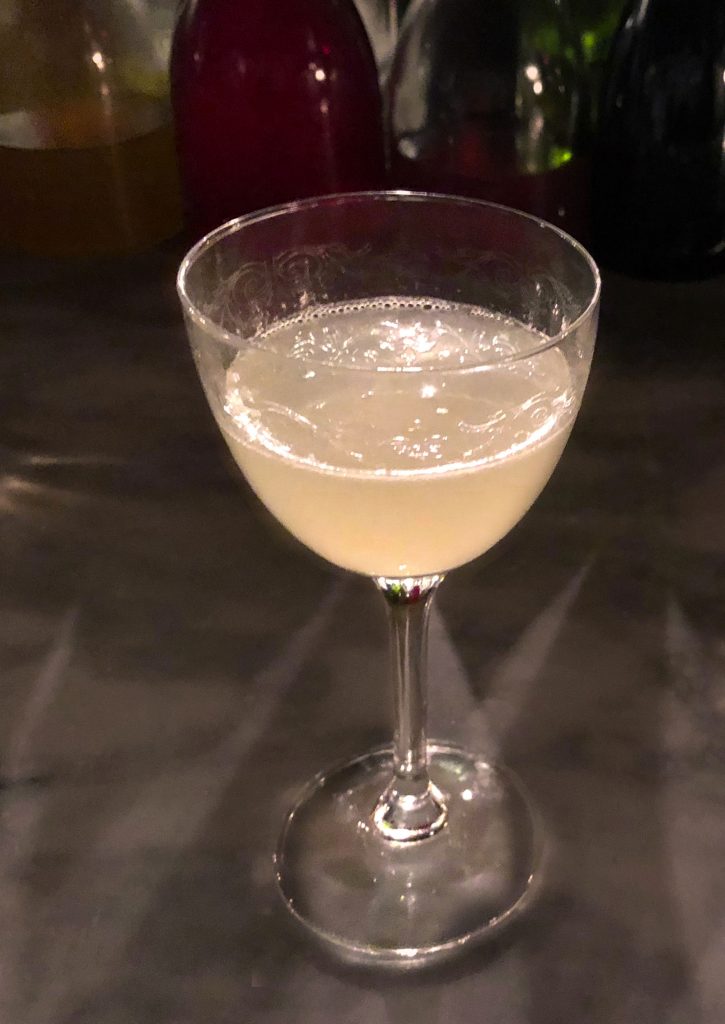
I’m thinking maybe three parts column-still Spanish-style white rum, maybe one part pot-still unaged Jamaican. We could do the D&C lime juice and rich syrup recipe, but I do fancy the “squeeze of whole lime, teaspoon of white sugar” recipe that some folks seem to find to be more historically accurate. I’m honestly not picky about the setting, though I can just as easily imagine drinking something of the sort while sitting at Attaboy as I can drinking it poolside… Come to think of it, it’s been a while since I had a Daiquiri in the pool, so maybe I’m particularly feeling the latter.
Kate: I mean if somebody wants a blended, sweet, rum, lime, and citrus and they call it a Daiquiri and that’s what’s known as the Daiquiri, there’s nothing wrong with that.
David: In most places in America, the only white rum you can get is Bacardí or something very close to that. In that case, yeah, I want fucking strawberries in there. I want something in there.
Krista: We live in a bit of a bubble. I go to the Midwest and the Mid-Atlantic for work and I sit at a bar where I think maybe they do good cocktails here. “Can I get a Daiquiri?” I hear so often, “Honey, we don’t have a blender.” And it shocks me how often I hear that. So, I just, I mean think about the way our country voted this year. We didn’t expect it in this bubble because we only talk amongst ourselves sometimes.
David: I see it expanding though. I mean you could go into the Midwestern cities ten years ago, they would have only consider it a blender drink, but every one of those cities has five, six bars where they’ll just do it normally now.
Kate: I see Daiquiris to rum as Old Fashioneds are to the whiskey world. If you go to the middle of America and order an Old Fashioned, it’s going to have a muddled cherry, a muddled orange slice, and probably soda water in there. It’s a different thing. It might be changing but that’s the ubiquitous Old Fashioned that you drink outside the cities in America, and Daiquiris are the same way.
I did an event at Miami Rum Festival a couple of years ago. The first day was trade. So, everybody was coming over and standing in line drinking Daiquiris—happy. The next day was consumers. And I was yelled at by all these Miami women saying, “This isn’t a Daiquiri. If you are going to be successful here, you need to change your specs. This is bullshit. Give me a real Daiquiri.”
Joaquín: Loud Miami women? What?
Kate: But they hated me. They wanted a sweet, blended Daiquiri, and the thing I was giving them was not what they wanted.
David: You’ve got to advertise it. In markets like that you’ve got to say you’re making the original Cuban Daiquiri. Before they can get their yell on.
Kate: Oh, no, they wanted to yell.
David: Well, yeah, that’s true too.


